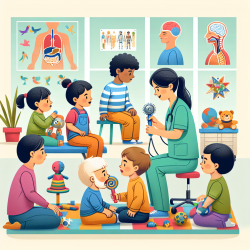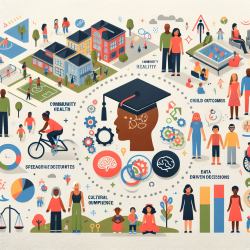As a practitioner dedicated to enhancing the lives of children with cerebral palsy (CP), understanding the complexities of dysphagia is paramount. The recent study titled Dysphagia limit in children with cerebral palsy aged 4 to 12 years offers crucial insights into how swallowing abilities differ between children with CP and their typically developing peers. This blog will delve into the key findings of this research and provide actionable steps for practitioners to improve their clinical practice.
Key Findings from the Research
The study assessed 77 children with CP, aged 4 to 12 years, using the Maximum Volume Water Swallow Test. The findings revealed significant differences in the dysphagia limits between children with CP and typically developing children:
- Children with CP had a significantly lower median dysphagia limit (7mL) compared to typically developing children (22mL).
- The severity of dysphagia was closely linked to the Eating and Drinking Ability Classification System (EDACS) levels. Higher EDACS levels correlated with lower dysphagia limits.
- EDACS level explained 55% of the variance in dysphagia limits among children with CP.
These findings underscore the importance of individualized assessments and interventions for children with CP, particularly those in higher EDACS levels.
Implementing Research Outcomes in Clinical Practice
To translate these findings into improved clinical outcomes, practitioners can consider the following strategies:
1. Incorporate Dysphagia Limit Assessments
Regularly assessing the dysphagia limit should become a standard part of the swallowing evaluation for children with CP. This can help identify those at higher risk of aspiration and other complications.
2. Tailor Interventions Based on EDACS Levels
Given the strong correlation between EDACS levels and dysphagia limits, interventions should be tailored according to the child's specific EDACS level. For example:
- EDACS Level I: Focus on exercises to enhance maximum capacity tasks, despite their relatively higher performance compared to other levels.
- EDACS Levels IV and V: Emphasize strategies that match their capacity to their performance, ensuring safety and efficiency in swallowing.
3. Engage in Multidisciplinary Collaboration
Managing dysphagia in children with CP often requires a team approach. Collaborate with occupational therapists, dietitians, and pediatricians to develop comprehensive care plans that address all aspects of the child's health and well-being.
4. Encourage Further Research
While this study provides valuable insights, there is always more to learn. Encourage colleagues and students to engage in research that explores new interventions, technologies, and methodologies for assessing and treating dysphagia in children with CP.
Conclusion
The study on dysphagia limits in children with CP offers critical data that can guide clinical practice and improve outcomes. By incorporating these findings into regular assessments, tailoring interventions based on EDACS levels, and fostering a collaborative approach, practitioners can significantly enhance the quality of care for children with CP.
To read the original research paper, please follow this link: Dysphagia limit in children with cerebral palsy aged 4 to 12 years.










